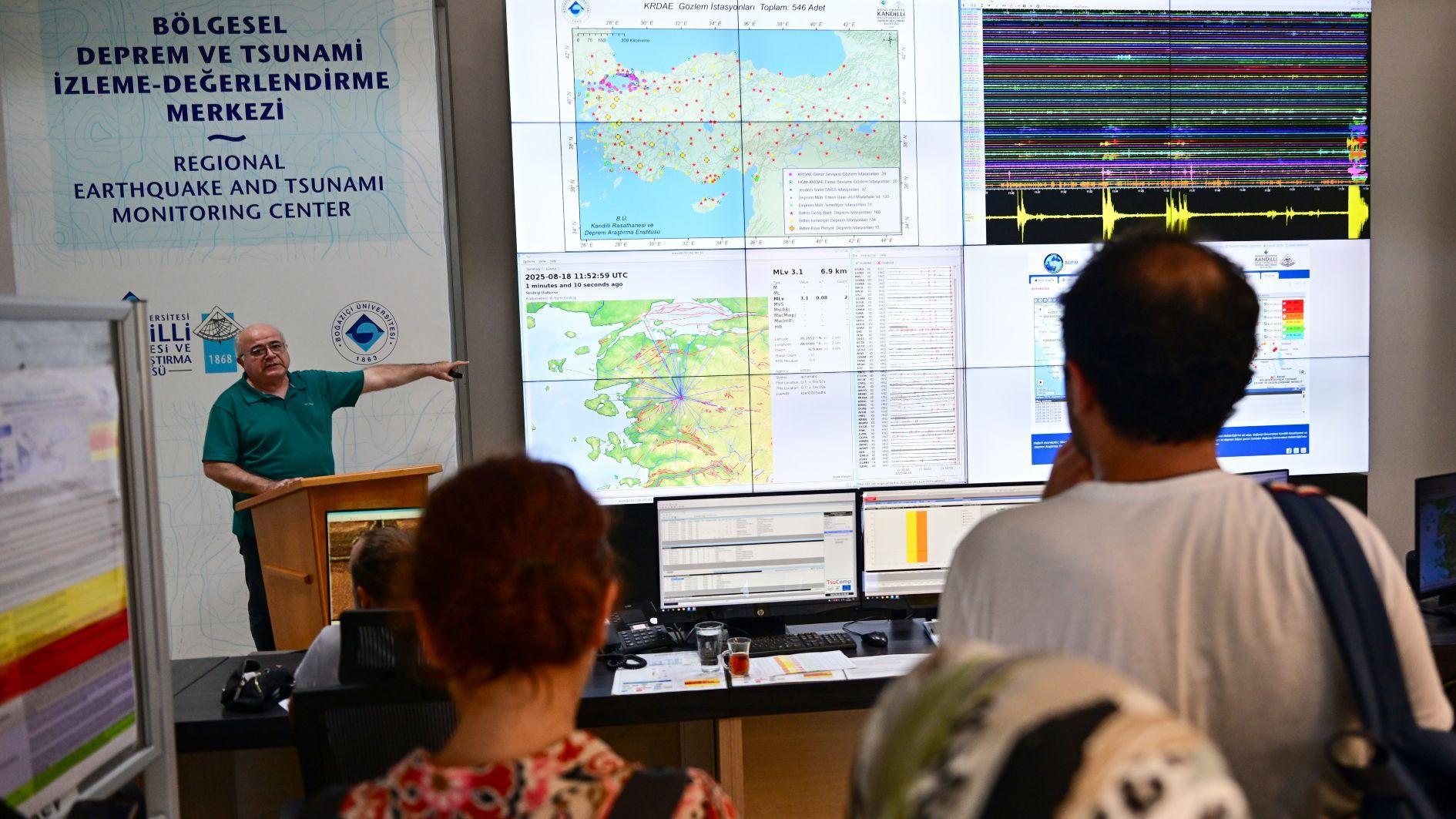
Boğaziçi University’s Kandilli Observatory and Earthquake Research Institute has opened its campus to visitors this week to mark the 26th anniversary of the devastating Aug. 17, 1999 Marmara earthquake, offering the public a rare glimpse into Türkiye’s leading center for earthquake and space sciences.
Over three days, from Aug. 18 to 20, visitors toured the Regional Earthquake-Tsunami Monitoring and Evaluation Center (BDTİM), the Disaster Preparedness Laboratory and “Deprempark,” where experts demonstrated earthquake safety measures.
The program also included the Astronomy Laboratory and the institute’s science history collections, which house manuscripts in astronomy, astrology, mathematics and geography. Specialists guided guests through the exhibits, answering questions on earth and space sciences.
Speaking during the program, Nurcan Meral Özel, Director of the Kandilli Observatory, said the institute wanted to commemorate the 26th anniversary of the Marmara earthquake with a different program this year by introducing their work to the public firsthand.
Özel noted that for the past 35 years, schools have visited Kandilli twice a week as part of awareness programs designed to improve disaster preparedness.
The observatory operates 500 seismic stations across Türkiye, transmitting real-time ground motion data to the BDTİM through advanced communication systems.
“Whenever an earthquake occurs anywhere in Türkiye, signals reach our laboratory instantly, allowing us to provide rapid earthquake information and tsunami early warning messages,” Özel explained.
Since 2012, Kandilli has also monitored coastal impacts and potential sea level changes, broadening its scope from earthquakes to tsunami risk assessments.
Founded originally 157 years ago as a meteorological center, today, it observes natural phenomena across sismology and astrophysics, and shares its data with the global scientific community.